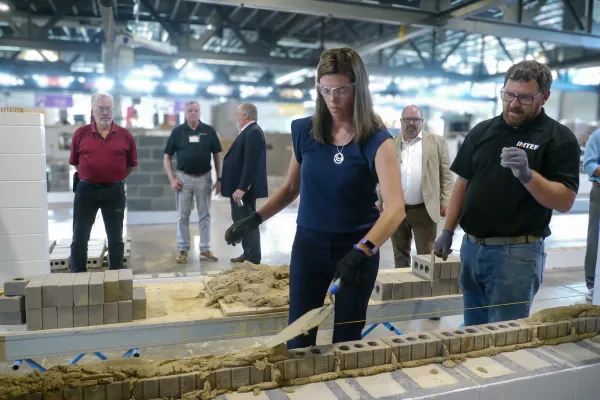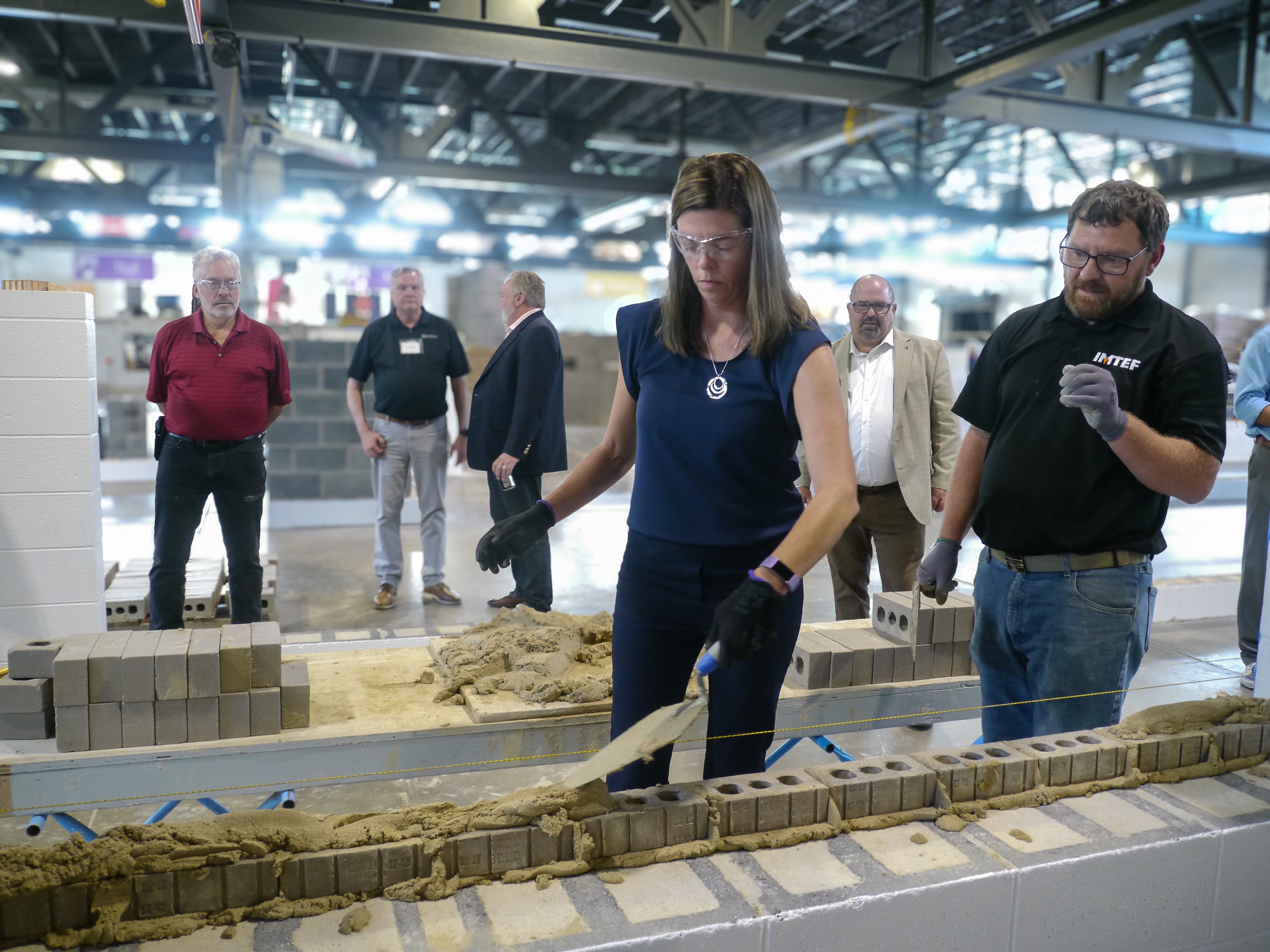IMI Convenes Masonry Industry to Keep BAC Materials at Forefront of Green Building

IMI’s Sustainability Summit, held this September, convened masonry industry stakeholders and decision makers from across North America to discuss how BAC-installed materials can meet the increasing market demand for green building. Event attendees included leaders and sustainability practitioners from the Brick Industry Association (BIA), the Concrete Masonry and Hardscapes Association (CMHA), and major brick and block manufacturers.
The Summit provided a forum to discuss the industry’s progress in developing product category rules (PCRs), life-cycle assessment (LCA) tools, and environmental product declarations (EPDs) for masonry materials. This information is used to provide standards for assessing the environmental performance of a material over its lifetime so that project owners, designers, and construction professionals can make informed product selections. As federal and local regulations make the push for low carbon building materials and practices, owners and designers are increasingly requesting this data.

Tricia Mauer, Chief Operating Officer and President-Elect of the Brick Industry Association, tries her hand at laying brick during IMI's Sustainability Summit at the BAC/IMI International Training Center.
Summit attendees heard about federal regulations and building projects from Charlie Martin, the General Services Administration’s (GSA’s) Buy Clean Advisor. GSA, the largest landlord in the US, owns and leases over 363 million square feet of space in over 8,000 buildings across the country.
The agency is currently using funds from the Biden-Harris Administration’s Inflation Reduction Act (IRA) to make their buildings more sustainable and cost-efficient. The IRA also includes a grant program that supports the development of EPDs.
BIA is currently updating its industry wide EPD. CMHA recently released an industry wide EPD and is in the process of developing a new PCR. Both associations are also working to encourage and support their manufacturer members in developing product specific EPDs.
“Masonry materials have long been considered a sustainable product because of their durability, longevity, and local availability and IMI has promoted our systems based on this,” said Caryn Halifax, IMI President. “Now, as the manufacturers in our industry develop the necessary environmental data we’ll have the tools needed to clearly demonstrate the superiority of building with masonry.”
Masonry industry stakeholders also heard from Ryan Welch, Principal and Research Director at the architecture firm Kieran Timberlake, on the specific data needed to effectively advance masonry systems viewed through an environmental lens. Welch, who developed the LCA app Tally®, which also worked on a study for IMI to show how masonry can be better represented in tools like Tally.
“Having our materials in the software that designers use to assess the embodied carbon of a building is critical in ensuring they continue to choose masonry,” said Roy Ingraffia, IMI National Director of Industry Development and Technical Services.
